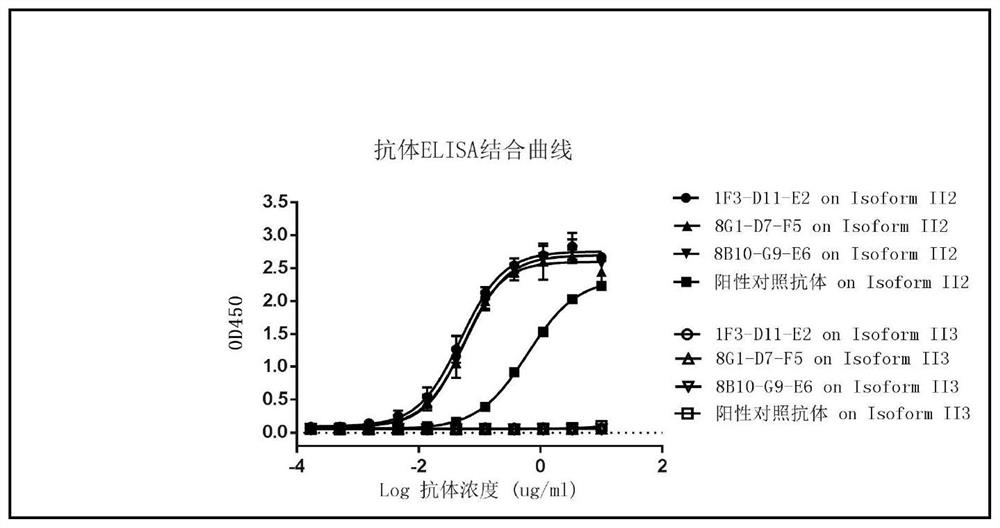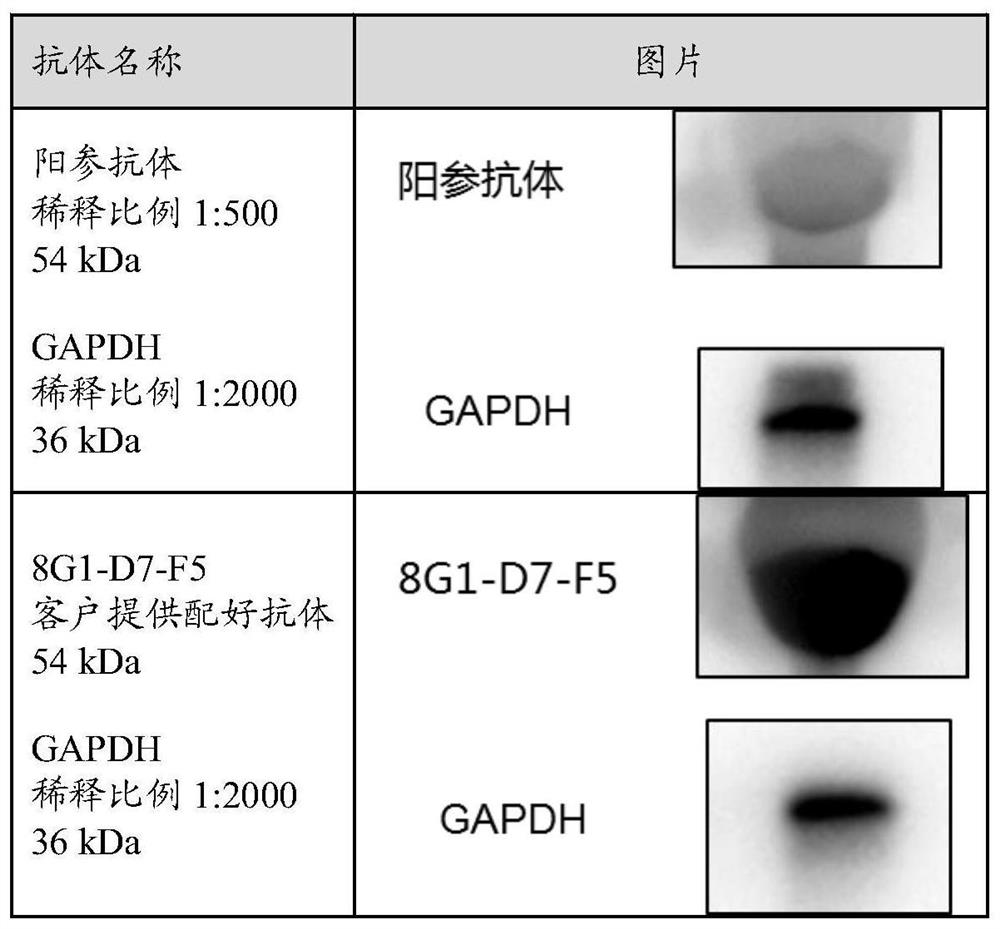cBIN1 antibody and application thereof
An antibody, cbin1 technology, applied in the field of immunity, can solve the problems of E-C decoupling cardiac function, decreased transfer ability, disturbance and other problems
- Summary
- Abstract
- Description
- Claims
- Application Information
AI Technical Summary
Problems solved by technology
Method used
Image
Examples
Embodiment 1
[0059] Example 1: Synthesis of antigens for immunization
[0060] The antigen of the present invention is human Cardiac bridging integrator 1 exon 13 (cBIN1 exon13) corresponding protein sequence LRKGPPVPPPPKHTPSKEVKQEQILSLFEDTFVPEISVTTPSQ, the polypeptide used for immunization was synthesized by Jill Biochemical Co. Stearate (PEG4) conjugated keyhole limpet hemocyanin (KLH, keyhole limpet hemocyanin).
Embodiment 2
[0061] Example 2: Production of anti-human cBIN1 exon13 antibody
[0062] In order to obtain the murine anti-human cBIN1 exon13 antibody, the immunization strategies in Table 1.1 (Table 1) were used to immunize different strains of mice (Balb / c, Shanghai Lingchang Biotech; SJL, Beijing Weitong Lihua). The antigens used were as described in Example 1; the adjuvants include: complete Freund's adjuvant CFA (InvivoGen Company, catalog number vac-cfa-60), IFA (InvivoGen Company, catalog number vac-ifa-60). Three days after the final vaccination, the splenocytes of the immunized mice were fused with mouse myeloma cells SP2 / 0 using the polyethylene glycol method to obtain B cell fusions that could express antibodies and proliferate indefinitely in vitro, and were selected in HAT cultured in culture medium. The fused hybridoma cells were plated in a 96-well cell culture plate, and positive clones were selected through primary screening for two rounds of subcloning.
[0063] Table 1....
Embodiment 3
[0066] Example 3: Determination of the variable region sequence of the anti-human cBIN1 exon13 antibody
[0067] The hybridoma cells were collected by centrifugation, and each 5×10 6 ~10×10 6 Add 1ml TRIzol and 0.2ml chloroform to the cells, vibrate vigorously for 15 seconds, place at room temperature for 3 minutes, centrifuge to take the water phase, add 0.5ml isopropanol, leave at room temperature for 10 minutes, collect the precipitate, wash with ethanol and dry to obtain RNA. Add template RNA and primers into the ice-bath centrifuge tube, make the primers and templates paired correctly, then carry out the reverse transcription process, and then perform PCR amplification. Add 2.5 μl of dNTP / ddNTP mixture to each of the four microcentrifuge tubes, and incubate the mixture at 37°C for 5 minutes, and set aside. Add 1 pmol of PCR-amplified double-stranded DNA, 10 pmol of sequencing primers, 2 μl of 5× sequencing buffer to an empty microcentrifuge tube, add double-distilled wa...
PUM
 Login to View More
Login to View More Abstract
Description
Claims
Application Information
 Login to View More
Login to View More - R&D
- Intellectual Property
- Life Sciences
- Materials
- Tech Scout
- Unparalleled Data Quality
- Higher Quality Content
- 60% Fewer Hallucinations
Browse by: Latest US Patents, China's latest patents, Technical Efficacy Thesaurus, Application Domain, Technology Topic, Popular Technical Reports.
© 2025 PatSnap. All rights reserved.Legal|Privacy policy|Modern Slavery Act Transparency Statement|Sitemap|About US| Contact US: help@patsnap.com



